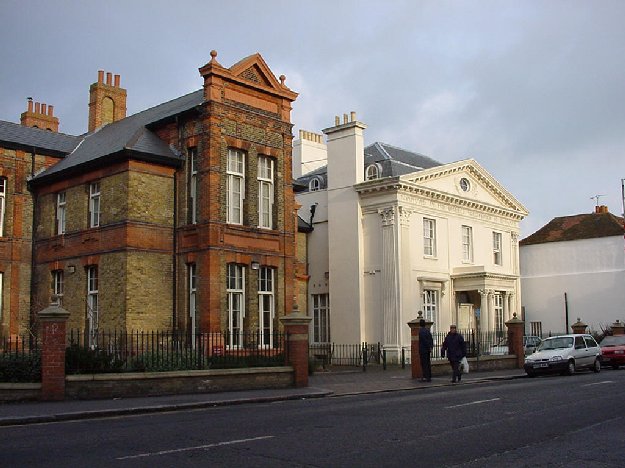| Back ... |
Royal Victoria Hospital |
|
 |
||
|
||
| The Dover Dispensary | The "Dover Dispensary" was formed as a charity whose objects were defined thus: | |
| OBJECT | "All Persons in sickness, really necessitous and not receiving Parish relief, being properly recommended, whether resident in Dover or the neighbouring villages are deemed objects of this Charity" | |
| ADMISSION OF PATIENTS | "No Patient can be admitted without a printed letter of recommendation, signed by a Governor or Subscriber; forms of which may be obtained, on application, at the Dispensary; and Governors and Subscribers are most particularly requested, before they give their recommendation, to ascertain that the Person is a proper object of this Charity, by being really necessitous." | |
| A person could become a "Governor for Life" by donating "£25 or upwards at one time", or a "Benefactor entitled to recommend Patients" by donating £10 or more. The Charity was funded by donations from individuals, organisations or businesses, by annual subscriptions, by "Legacies and Memorial Gifts" and by collection boxes left in public houses and other public places. They also received "Miscellaneous Gifts of Flowers, Fruit, Money, Magazines, etc.", from local businesses as well as fruit, etc., from Church Harvest Festivals. | ||
| The above information is taken from the Annual Report
of the Committee of the Dover Didpensary, for the year ended 1st March, 1829,
published by the Secretary, Edward Elwin, in 1846. In the same volume is an account of the numbers of patients admitted during that year: |
||
| REPORT OF PATIENTS | Report of
Patients, from March 1st, 1828, to March 1st, 1829.
Admitted ............................... 452 Discharged Cured ........................................................ 311 Relieved ...................................................... 35 For Irregularity ............................................ 11 Receiving Parish Relief ................................. 17 To Canterbury Hospital .................................. 3 Died ...................................................................................................................... 23 Remain on Books
..................................................................................................
52 Total ..................................... 452
The Deaths were as follows:- Consumption .................................... 11 Palsy and Apoplexy ............................ 2 Dropsy .............................................. 3 Water in the Head .............................. 1 Water in the Chest ............................. 1 Inflammation of Lungs ........................ 2 Scald ................................................. 1 Enlargement of Heart ......................... 2
23 |
|
|
||
| The Dover Hospital |
The "Dispensary" was dropped from the name in 1893, when it became known
simply as "The Dover Hospital." In 1875 the Hospital board appointed the Dispenser, Mr Edward Parker, to collect the Annual Subscriptions. He continued this duty until 1894, after which he remained as Dispenser until his early death in 1902 at the age of 66. |
|
 |
||
|
The original hospital building was opened in 1851. The text over the windows reads: "INSTITUTED AT THE GENERAL THANKSGIVING OF MDCCCXLIX" (1849) |
||
 |
||
| Royal Victoria Hospital |
The Annexe was built to celebrate the Golden Jubilee of Queen Victoria in
1887. The upper panel reads: "HOSPITAL ANNEXE" and the lower panel: "JUBILEE OF QUEEN VICTORIA"
With permission, the hospital was re-named the Royal Victoria Hospital in
1902, in honour of the late Queen. |
|
During the Second World War the hospital moved into the country to escape
the bombing and shelling. The 112th Annual Report of the Committee
contains the following information:
The Maternity Ward was part of the In-Patient Department - I have a copy of a birth certificate which gives the place of birth as "Royal Victoria Hospital, Waldershare, Tilmanstone R.D." The 118th Annual Report records the return to Dover after the war:
|
||
| The hospital was finally closed in May 1987. In latter years it had provided out-patient services along with a stroke unit and geriatric day-care. The eye hospital in Noah's Ark Road (formerly the Isolation Hospital for TB care) also closed with all services being transferred to Buckland Hospital. This in turn has been gradually run down over the past decade, with the closure of the Accident and Emergency Unit, the operating theatres and several wards. Patients now have to travel to Ashford for most services. |